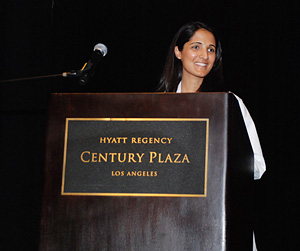- Question: How do the ingredients in e-cigarettes and vaporizers affect respiratory health? - August 16, 2019
- Bad Technique and Vocal Injury - January 9, 2019
- Is Edible Marijuana Dangerous for the Voice? Myths Dispelled - December 18, 2018
- Surprise! You have a hemorrhage - January 31, 2018
- Graves’ Disease: Treatment Overview - September 25, 2017
- Adele and the Stigma of Vocal Injury - July 11, 2017
- Vocal Curbside Consult: How does the thyroid affect the voice? - May 16, 2017
- Vocal Curbside Consult: How do hormones affect the voice? - May 3, 2017
- Vocal Curbside Consult: How do emotion and stress affect the voice? - April 17, 2017
- Vocal Curbside Consult: Vocal Recovery After Illness - April 7, 2017
 The shocked expression on Usher’s face said it all. His disbelief that Kris Thomas is a man was echoed by two of the other judges as well, and not without cause. Thomas is a young man who sang a Whitney Houston song (Saving All my Love For You) in the original key, hitting the highest of Whitney’s high notes. While another singer would have keyed it down or not attempted the song at all, Kris Thomas altered nothing except the gender of the performer.
The shocked expression on Usher’s face said it all. His disbelief that Kris Thomas is a man was echoed by two of the other judges as well, and not without cause. Thomas is a young man who sang a Whitney Houston song (Saving All my Love For You) in the original key, hitting the highest of Whitney’s high notes. While another singer would have keyed it down or not attempted the song at all, Kris Thomas altered nothing except the gender of the performer.
 The American listening public is no stranger to male falsetto. When performing his recently release hit, Suit and Tie, at the Grammys, Justin Timberlake sang nearly entirely in falsetto. But even at his highest, Timberlake doesn’t touch the notes that appeared so easy for Thomas, who landed at least three steps higher on the scale.
The American listening public is no stranger to male falsetto. When performing his recently release hit, Suit and Tie, at the Grammys, Justin Timberlake sang nearly entirely in falsetto. But even at his highest, Timberlake doesn’t touch the notes that appeared so easy for Thomas, who landed at least three steps higher on the scale.
There is something about hearing a male voice singing a song written for a woman, and singing it powerfully, emotionally, and pitch-perfectly, that rouses even the most stoic of listeners.
What is falsetto?

Falsetto is a term that is usually applied to the male singing voice. While some controversy exists, it is generally accepted that the female equivalent of falsetto is termed “head voice.” Falsetto is one of the registers (of four) that the voice can produce. The mechanism by which it is produced has been studied extensively and is generally accepted to be due to extremely rapid vibrations of the edges of the vocal cords. The vibration is so rapid that the cords usually do not close. This is thought to limit some of the tone color that may be accessible in other (primarily modal or chest) registers. It should be noted, though, that some men can produce falsetto with considerable ring or color.
How can I sing in falsetto?
While some experts believe that falsetto is mechanically easier to produce, many singers find this to be the opposite. Falsetto is often the most challenging part of the vocal range. However, this may be due to the singer’s attempts to push their chest voice (modal register) while accessing falsetto notes to continue to achieve the color of chest voice. This is not only vocally challenging but is often damaging. The best way to access falsetto is to accept the compromise of loss of tone color for the notes gained by falsetto and to use the beautiful flute-like higher falsetto notes to add to the listener’s experience. This is best done with an expert vocal coach who can aid the singer in relying on breath support to relax the vocal muscles so that the edges are free to vibrate rapidly.
Is falsetto damaging?
Done correctly, again with the likely loss of some tonal color, falsetto should not be damaging. Damage occurs when singers attempt to push their chest voice (modal register) into falsetto range to retain tonal color. This is unnatural for the vocal cords and may result in significant damage.
How can I find a good vocal coach?
This is extremely challenging because there are many variables. Singers should look for someone well-trained who continues to study voice and expand their skill set. Partnering with a voice doctor (laryngologist) can often help a singer identify vocal damage that may be caused by poor technique, suggesting that the vocal coach may not be the ideal fit for that singer. In the end, it is important for a singer to not have pain when they sing, to recognize their own limitations, and to develop their voice in the register it is meant to sing in. A good vocal coach can help a singer do this, preventing vocal damage, and indefinitely prolonging the singer’s career.
Read patient stories about Dr. Reena Gupta from The Division of Voice at the Osborne Head and Neck Institute.
To learn more about the voice, click here.




